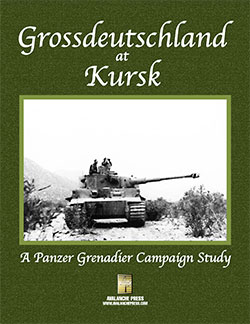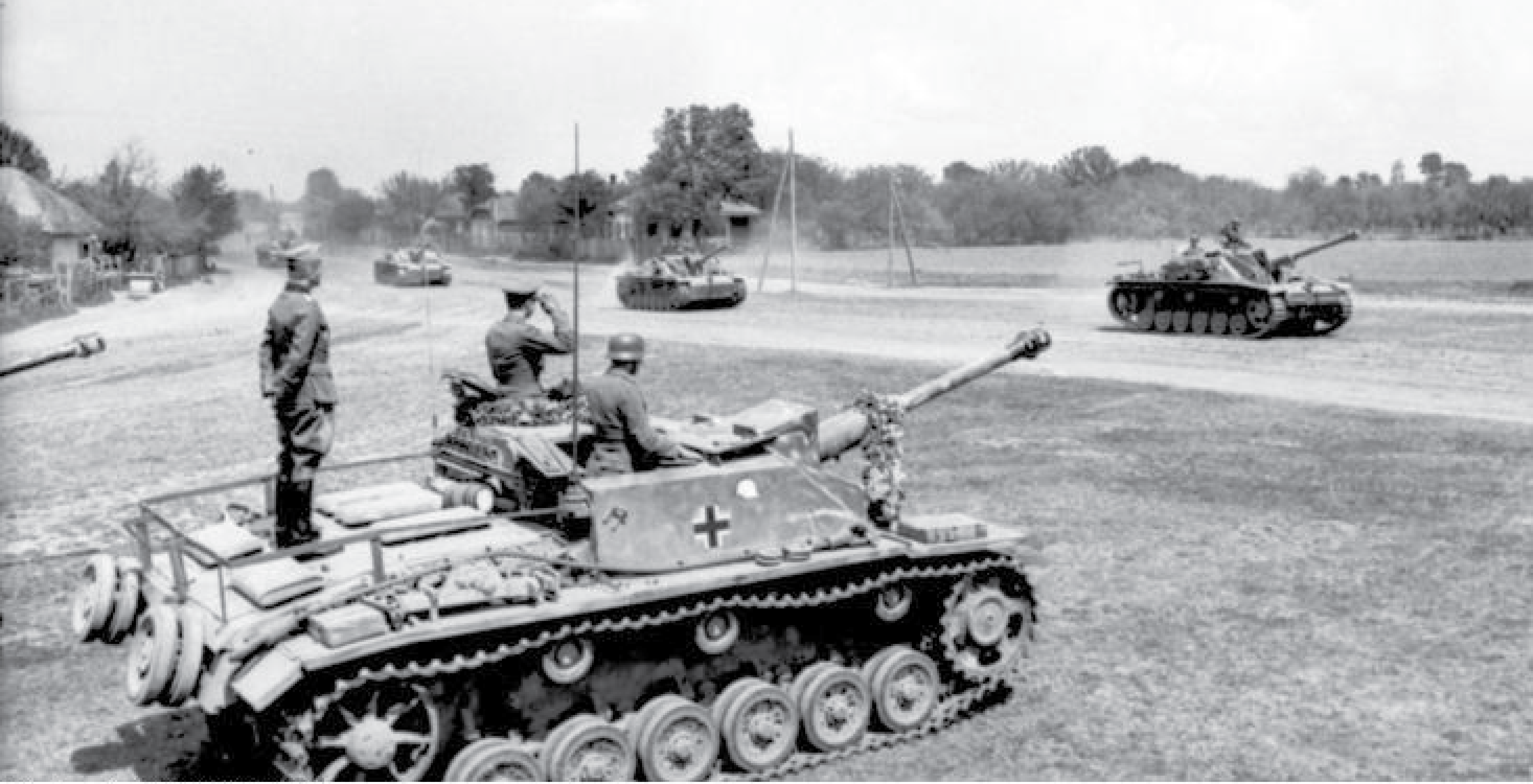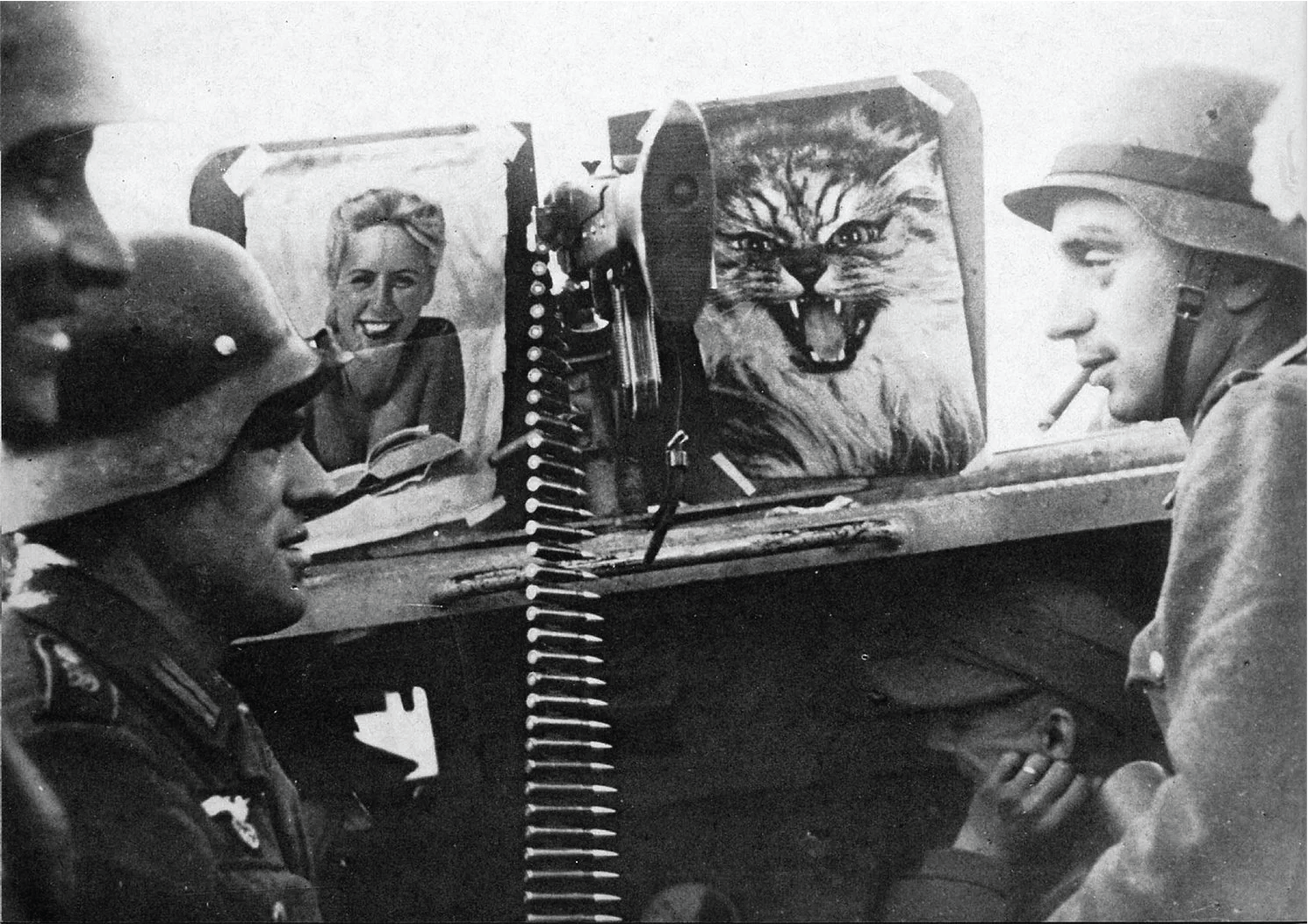| Grossdeutschland at Kursk:
The Story
By Mike Bennighof, Ph.D.
October 2023
 In the spring of 1943, after the Eastern Front had been stabilized following the multiple disasters of Stalingrad, the German high command sought to regain the initiative with an offensive of their own. As Germany could no longer undertake a general offensive all along the front, the obvious place for a more limited attack was at Kursk in southern Russia, just north of the border with Ukraine. In the spring of 1943, after the Eastern Front had been stabilized following the multiple disasters of Stalingrad, the German high command sought to regain the initiative with an offensive of their own. As Germany could no longer undertake a general offensive all along the front, the obvious place for a more limited attack was at Kursk in southern Russia, just north of the border with Ukraine.
Hermann Hoth’s Fourth Panzer Army would command the southern prong of the Citadel offensive, with Walter Kempf’s “Army Detachment” of three corps to protect the vulnerable right flank of the advance. Fourth Panzer Army likewise numbered three corps, with 223,000 men and 925 tanks between them.
The spearhead of the German advance would be two powerful panzer corps. On the right, the II SS Panzer Corps numbered three panzer grenadier divisions from the SS political militia, each lavished with additional tanks, vehicles and weapons to give them much greater combat power than a standard regular Army panzer division.
On the left, the Lt. Gen. Otto von Knobelsdorff’s 48th Panzer Corps had one infantry division, two Army panzer divisions, the 3rd and the 11th, and the Grossdeutschland Panzer Grenadier Division. The 52nd Corps, with three infantry divisions, would secure the left flank of the panzer corps’ advance.
The Grossdeutschland Division carried great expectations. Like the SS divisions, it had been given numerous additional combat support battalions, plus additional weapons within its organic structure (and a company of Tiger heavy tanks). Just before the offensive began, the nearly 200 brand-new Panther tanks of 10th Panzer Brigade came under Grossdeutschland’s command, just in time to thoroughly scramble its organization.
Grossdeutschland’s part in the offensive began on the afternoon of 4 July; officially the attack was to begin on the next morning but German practice included proving attacks beginning the day before a general assault. With the support of Stuka dive-bombers, Grossdeutschland’s infantry attack four large (battalion-sized) outposts of the Soviet 71st Guards Rifle Division, engaging in much heavier fighting than had been anticipated. The fighting lasted from mid-afternoon well into the night, but the Grossdeutschland armor did not participate as the Panther tanks of 10th Panzer Brigade had not yet joined the division.

Grossdeutschland assault guns on parade. April 1943.
The tanks accompanied the infantry the following morning, when Grossdeutschland began its full-scale attack after a preliminary artillery barrage. The advance soon ran into a ravine that held up the tanks, along with well-placed Soviet minefields and heavy artillery fire. The Fusilier Regiment, backed by all of the Panthers and half of the other tanks, got nowhere but the Grenadiers went forward without their own armored support and cleared a path. The fighting continued until nightfall, with the division suffering heavy losses, particularly among its officers. It also reported substantially more tanks damaged by mines than any other German division.
Once the ravines had been crossed, the Grossdeutschland division made better progress, despite muddy ground and thick, dense minefields. The Fusiliers moved behind the Grenadiers to join their assault, breaking the Soviet 67th Guards Rifle Division. With their first objectives taken, the corps pressed on toward the Pena River and the second line of Soviet defenses.
They had done so with little help from the Panther brigade. The big machines drew the attention of Soviet artillery and anti-tank fire, but most of the losses came from mechanical breakdowns. The Panther was a new machine plagued by teething troubles, but even at the time some German observers noted that the tank wasn’t the only problem. The two Panther battalions had been manned by taking the shell-shocked remnants of two tank battalions from front-line panzer divisions, and fleshing them out with men of other units who had returned from hospital convalescence, plus new recruits. Some of the new Panther crews appear to have been less than eager to return to combat.
One of the Panther’s defects caused the mufflers to explode in flame if the engine ran hot. A Grossdeutschland officer watched crew after crew rev up their engines on the way to the front, wait for the muffler to explode, and then raise the orange flag indicating a breakdown before piling out of the tank to eat lunch in its shade.
If the Panther battalions proved averse to battle, Col. Hyacinth Graf Strachwitz’s Grossdeutschland tank regiment – established at the same time as the Panther formation, and also receiving many new crewmen – performed like a veteran outfit. But it was the infantry that made most of Grossdeutschland’s gains, but at a heavy cost in irreplaceable junior leaders.

Soviet soldiers examine a badly damaged Panther tank. Kursk, July 1943.
Even so, the Grossdeutschland troops failed to reach their next line of objectives on schedule. The Soviet 3rd Mechanized Corps (a division-sized formation) put up fierce resistance and the Germans could penetrate but not break through their defenses. Meanwhile, the SS militia operating on the right flank of 48th Panzer Corps did stage a breakthrough, presenting a fresh operational problem for Fourth Panzer Army. As the SS advanced, their bared their left flank to a Soviet counter-stroke, yet 48th Panzer Corps had its own ultimate objective and the need to screen the SS, and these two goals did not share the same axis of advance – Knobelsdorff’s corps had to move directly north to take the city of Oboian, but also north-east to cover the SS. Neither of these goals could be met as long as the Germans were bogged down trying to grind through the Soviet fixed defenses.
Steadily, the Germans advanced in the face of withering artillery and anti-tank fire, losing men and machines at an alarming rate but pressing the defenders back and threatening to unhinge the Soviet defenses. By the night of 8 July, M.E. Katukov’s Soviet First Tank Army was in trouble, despite the appearance of fresh formations to bolster its defenses.
During the overnight hours, Knobelsdorff made what would be a fateful decision. Grossdeutschland and the 11th Panzer Division would continue their northward advance for another day, and then swing to the west where the Soviet 6th Tank Corps threatened to cave in the left flank of 48th Panzer Corps. After dealing with this threat, the division would then return to the north-east and re-join 11th Panzer Division in an effort to support the II SS Panzer Corps, which would shift its own point of attack westwards to better align with 48th Panzer Corps.
But the Red Army had a say, too. Nikolai Vatutin of the Voronezh Front, commanding the sector, sent Katukov two fresh tank corps plus additional rifle divisions and anti-tank brigades to shore up his sagging defenses and commence an offensive of his own. Despite the Soviet reinforcements, the Grossdeutschland and 11th Panzer Divisions surged up the Oboian road. On the afternoon of 9 July, the shift westwards began. But at the same time, Hoth made another decision: with Soviet armor threatening to overwhelm the right flank of the SS (on the opposite side from 48th Panzer Corps), he sent them back toward Prokhorovka. The German spearhead now dissipated itself into multiple prongs rather than forming an unstoppable armored fist to smash through the last Soviet lines.
Note: This is the point where Chapter Eight of Kursk: Burning Tigers concludes, with Grossdeutschland at Kursk picking up the story on 10 July.
In the early morning hours of 10 July, Grossdeutschland began its attack toward the west, finding the seam between the Soviet Sixth Tank and Third Mechanized Corps. This time the Germans found the success that had eluded them so far, and they punched deeply into the Soviet lines. The Soviets struck back with unexpectedly quick counter-attacks, but soon enough Sixth Tanks Corps was stumbling back to the west in an effort to avoid encirclement.

Two Grossdeutschland soldiers and their unusual pinup choices.
That afternoon, the German cause suffered what turned out to be a significant accident. Strachwitz, the panzer regiment commander, leaned on the breach of his command tank’s cannon and told his gunner, “don’t fire.” The gunner apparently only heard “fire,” and the recoil shattered the colonel’s left arm. His replacement, Col. Karl Decker of the 10th Panzer Brigade, led Grossdeutschland’s armor with far less verve than Strachwitz. Over the coming days the panzer regiment continued to disappoint, taking what other commanders considered an excessively long time to move to its assigned assembly areas and prepare itself for action. But Decker would argue later that Strachwitz’s leadership had been “idiotic” and incurred far too many unnecessary losses in exchange for minimal gains. After the change in command, the panzer regiment achieved less, but it also bled much less, while losses to mines dropped to the same rate as other panzer divisions. Decker would be rewarded after the battle with the command of his own panzer division.
Even without Strachwitz, Grossdeutschland mauled Sixth Tank Corps. During the night of 11-12 July, 3rd Panzer Division shifted northward to take over Grossdeutschland’s positions, to allow Grossdeutschland to resume the advance on Oboian. But before the re-deployment could be completed, the Soviets struck first. After a heavy artillery barrage, the restored First Tank Army went over to the offensive in the early hours of 12 July. Now the Grossdeutschland Division found its battalions and regiments tasked with plugging holes in the German lines rather than gathering itself for a renewed attack.
On the 13th, Germany’s Supreme Leader decided to call a halt to Operation Citadel. Grossdeutschland would continue to fend off the Soviet offensive on the 13th and 14th, including some very successful local attacks. But these were in the service of holding what had been gained, not of continuing the advance. The Grossdeutschland Panzer Grenadier Division left the front on the 17th, though the withdrawal would not be fully complete until the next day. Almost immediately the division boarded trains for deployment north of Kursk to help stem the Soviet offensive at Orel.
You can order Grossdeutschland at Kursk right here.
Sign up for our newsletter right here. Your info will never be sold or transferred; we'll just use it to update you on new games and new offers.
Mike Bennighof is president of Avalanche Press and holds a doctorate in history from Emory University. A Fulbright Scholar and NASA Journalist in Space finalist, he has published a great many books, games and articles on historical subjects; people are saying that some of them are actually good.
He lives in Birmingham, Alabama with his wife, three children, and new puppy. He misses his lizard-hunting Iron Dog, Leopold.
Want to keep Daily Content free of third-party ads? You can send us some love (and cash) through this link right here.
|
